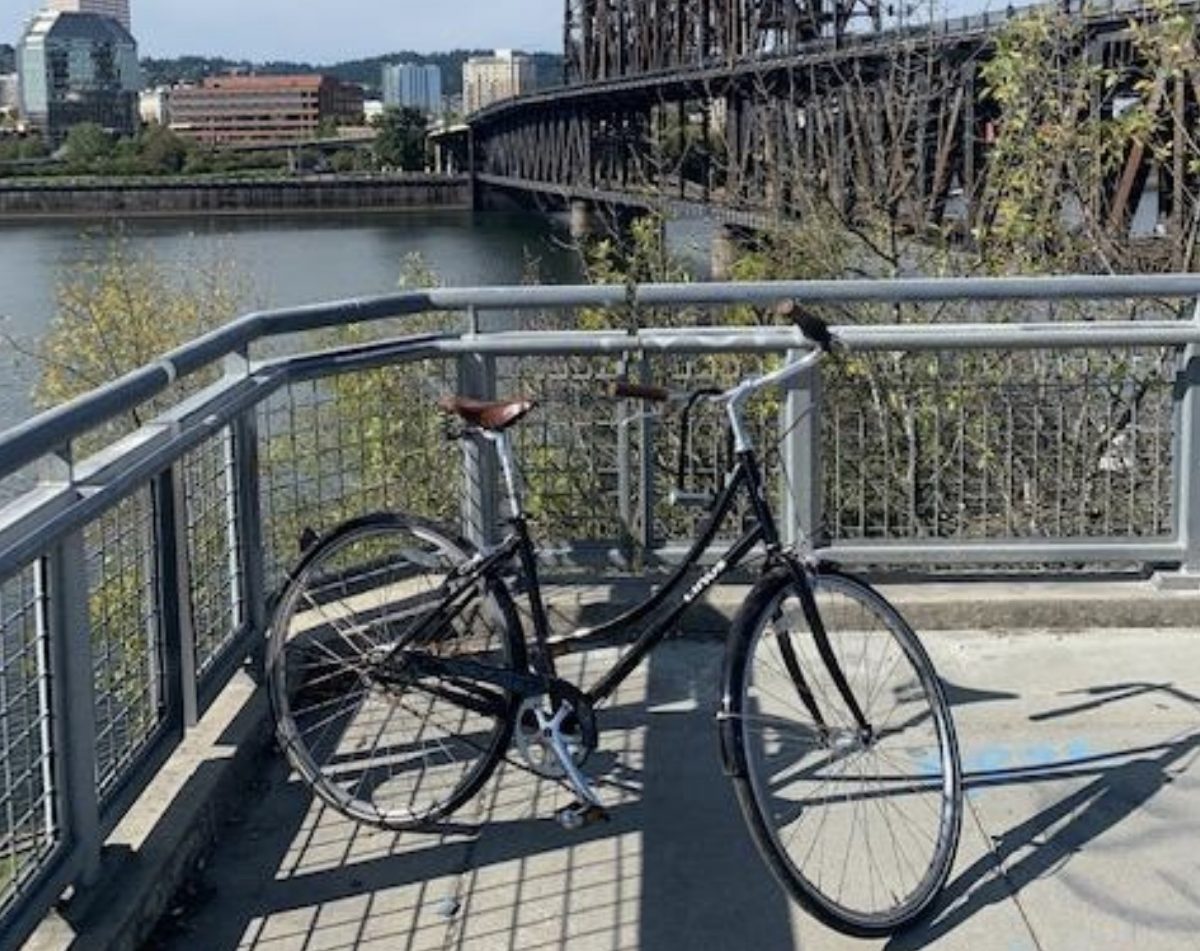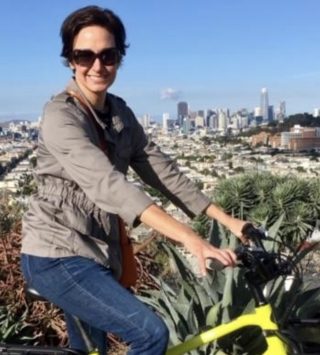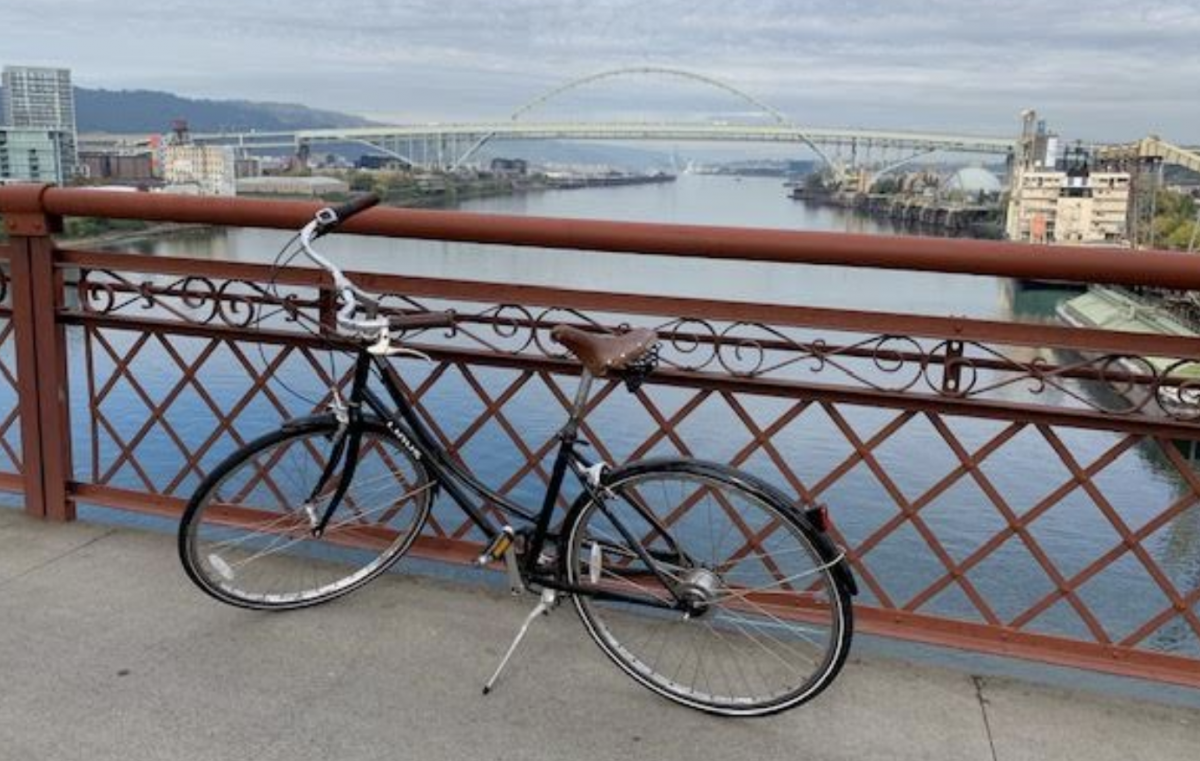


Note: We can get pretty cynical around here. So when former deputy director of Bicycle Colorado Amy Morfas wanted to share her thoughts about biking in Portland, I thought it might provide a healthy dose of perspective. – Jonathan
——
There seemed to be no resentment of my presence, just a mutual understanding that people get priority.
When I visit urban areas, I tend to view them through a different lens than a typical visitor might, mainly due to my years of working as a bicycle advocate. Seeing a city through the eyes of a pedestrian or person who rides is very different than buzzing around town in a rental car or an Uber. When you’re walking or riding, you’re within the environment and not just passing through, encased and separate from your surroundings.
I recently had the pleasure of house-sitting in Portland for three weeks. While there, I explored the city as well as the beautiful surrounding areas. What a treat!
For 25 years, I have lived in Boulder, Colorado, a city known as one of the most bicycle-friendly in the country. Until recently, I’d served for almost 10 years as deputy director of Bicycle Colorado, the state’s bicycle advocacy group headquartered in Denver. I also lived in Germany for three years, so I’m pretty familiar with what it takes to make a community work for people, not just cars.
While Boulder has a great network of multi-use paths throughout town, riding in a standard bike lane can be dangerous as drivers tend to often be aggressive and distracted. Denver has only a few networked off-road paths, so most transportation riding there is done in tandem with cars, with the same issues. It’s not ideal.
My initial impressions of Portland were as a pedestrian and I was impressed from the start. I’m a casual runner and had brought my running gear with me, partially to explore the northeast neighborhood I was staying in.
Advertisement
I was immediately blown away by how courteous the drivers were. It was a dramatic difference from what I’ve experienced in Colorado.
While running down a residential side street, I’d come up to larger street where the cross traffic had neither stop signs nor crosswalks. Regardless, the approaching traffic would just stop. Pretty much every time. And not only would they stop, they’d do it about 10 yards back from the intersection, so it was done in a totally non-threatening way. There seemed to be no resentment of my presence, just a mutual understanding that people get priority. In Colorado, sadly, the rhetoric is often that if you’re not in a car, you’re ‘in the way.’
I also got to bike around. I spent most of my time in the central, touristy (wealthier) parts of town, and even for someone who didn’t really know their way around, the city was welcoming.
I’d heard about the “big” infrastructure downtown and headed that way first. It totally delivered. Tilikum Crossing, a bridge that opened in 2015 and accommodates mass transit (both bus and light rail), bicyclists and pedestrians only (no private vehicles), is one of the most impressive pieces of infrastructure I’ve seen in the U.S. After riding across the bridge, I went to check out the Portland Aerial Tram and took it up to the Oregon Health and Science University, which has little to no parking for cars. It’s a shining example of a simple yet innovative way to move people en masse in a high-density area. I also rode from Steel Bridge along the famous Eastbank Esplanade down to the Springwater Trail into the Sellwood neighborhood. It’s such a safe and efficient way to get around without needing to pick up the car keys.
While the bigger, ambitious projects (deservedly) stand out, it was the little things that truly made a difference from the perspective of a visiting cyclist. The clear and thorough signage everywhere made navigating super easy and kept me on track. It seemed like there were bike lanes (many of them protected) and bike signals everywhere. Bump-outs were common to slow traffic down, which already seemed to be traveling noticeably slower (i.e., at the speed limit) compared to drivers in Colorado.
Advertisement
Many of the residential areas also feature greenways; low-traffic, low-speed streets for stress-free riding, making it safe for the ‘8-80’ crowd to enjoy. Portland does a great job of keeping cyclists off heavily trafficked streets with viable, efficient alternatives that minimize conflicts with drivers.

Is Portland perfect? No. But it is an example of what can be done in U.S. cities to provide efficient alternatives to the dependency on single occupancy vehicles we’ve formed. After spending 10 years working in Denver, it’s shocking to see how much Denver is lagging behind in becoming a bicycle-friendly city. And unlike Portland, Denver doesn’t have the expensive bridge infrastructure to contend with. And we have sunshine! Things could happen so quickly in Colorado’s capital if only there was the political will to make it happen. I remain optimistic that it will happen, but the time to act is now.
Downtown Denver Partnership, downtown’s economic vitality member group, has been taking elected officials and city planners on Urban Exploration tours to Copenhagen to show them what can be possible when cities prioritize people over cars. While I’m all for aiming high, a city as advanced as Copenhagen can sometimes seem out of reach. I wonder if similar trips to Portland could be made? It would truly eliminate any ‘yeah, but we can’t do that here’ excuses.
Kudos to Portland’s past and present city planners, elected officials, The Street Trust and other local advocacy groups for all the work they’ve done to make Portland so bicycle-friendly and provide people with real, efficient alternatives for getting around town. I can’t wait to go back.
Until recently, Amy served as Deputy Director of Bicycle Colorado, the state’s leading bicycle advocacy group. She lives and rides her bikes in Boulder, Colorado for transportation and recreation and remains committed to and passionate about people-first communities.
— Get our headlines delivered to your inbox.
— Support this independent community media outlet with a one-time contribution or monthly subscription.



